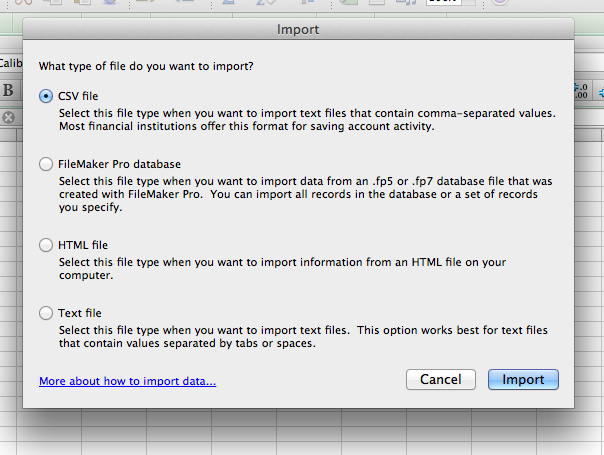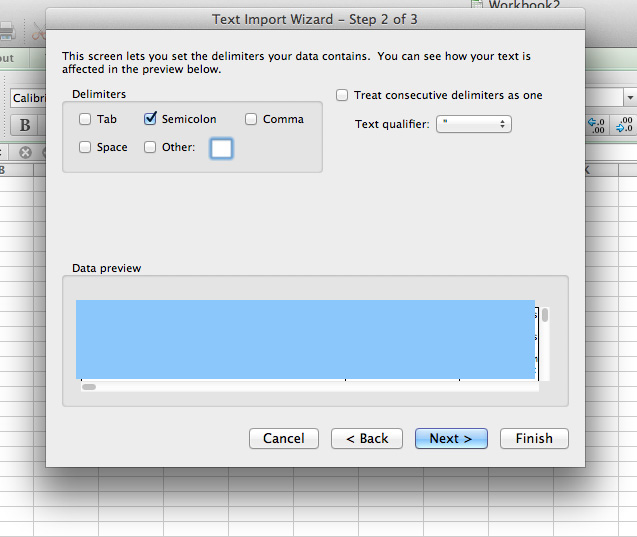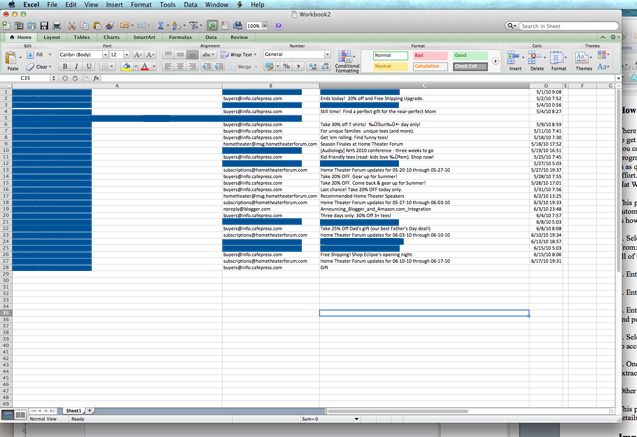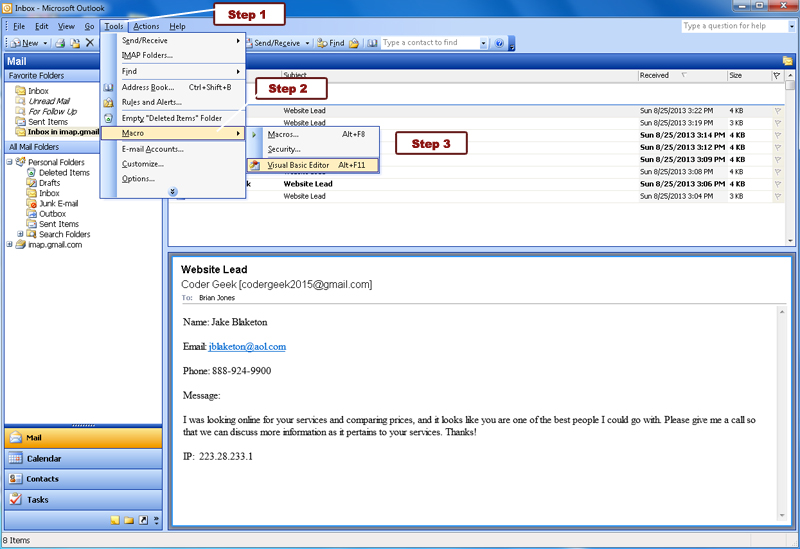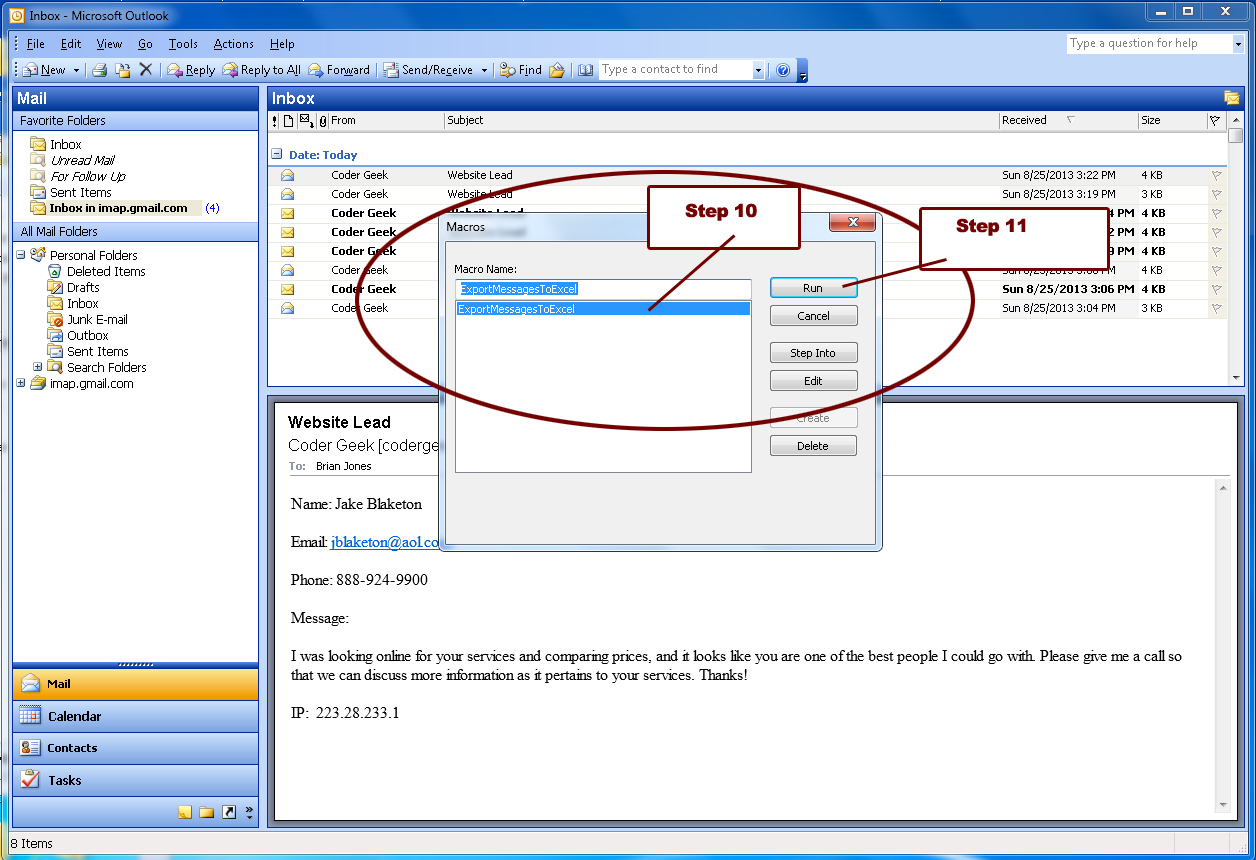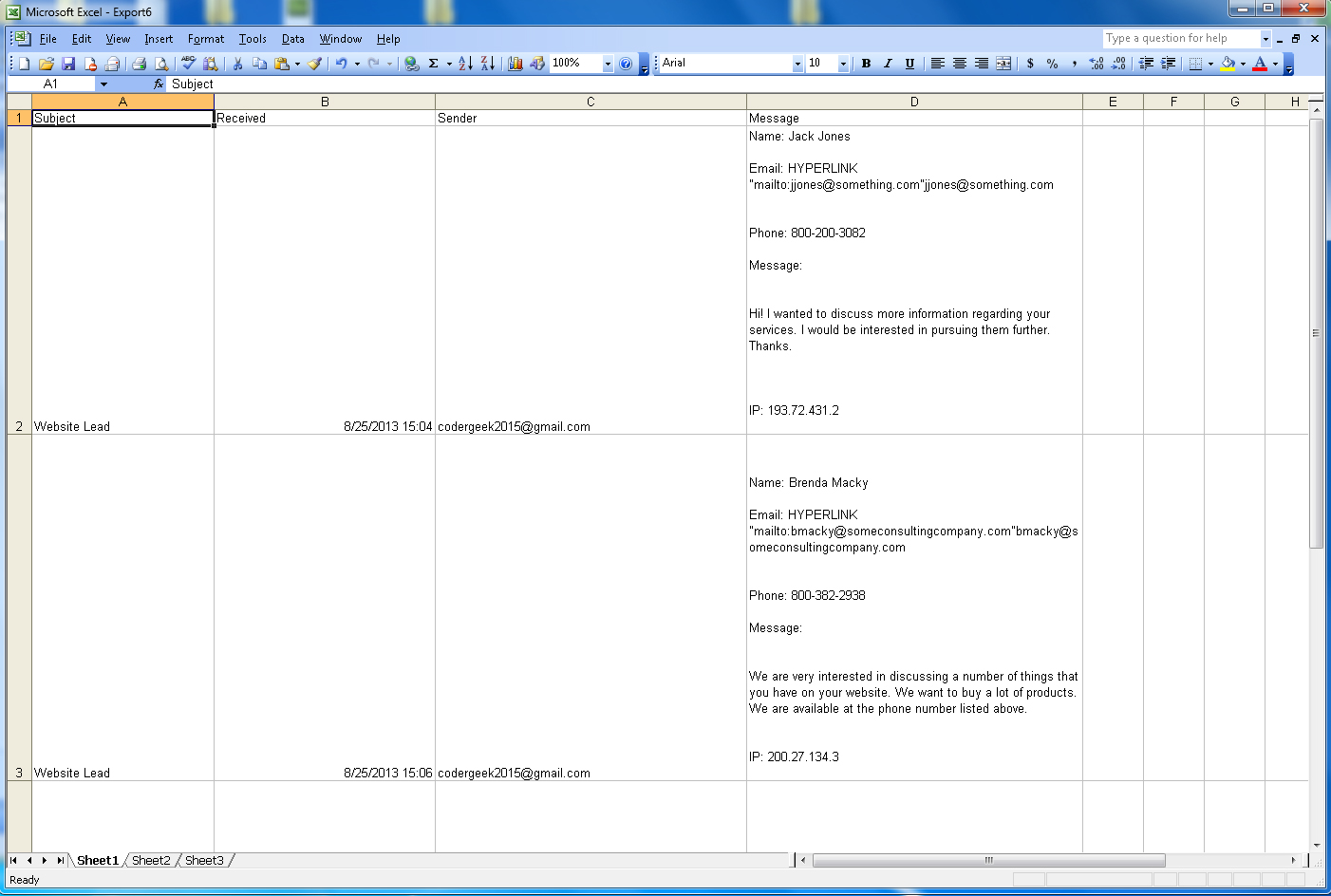Checkout Page Optimization: Just Follow the F.A.C.T.S. |
| Checkout Page Optimization: Just Follow the F.A.C.T.S. Posted: 26 Nov 2013 03:15 PM PST Posted by Yoast Editor's note: This post was co-authored by Joost de Valk and his brother Thijs de Valk. At Yoast, we've recently written about how we've drastically changed our checkout page. This process and our findings gave us the idea to do a best practice of sorts on checkout pages. As it is, a lot of checkout pages are far from optimal, and this short film from Google Analytics is rather harsh but lays it out quite well: There are some elements to a checkout page that, in general, really help your conversion rate. Ignore these findings at your own peril. I'll be looking at the following factors, all of which have a serious impact on your conversion rate: Focus, Assurance, Clarity, Time, and Social proof. FocusA page needs focus for people to understand what it is you want. On the checkout page this is doubly true; if your focus isn't on the process of checking out, people will get confused. And confused people don't convert. An easy way to add focus to your checkout page is to implement calls to action. Calls to action are somewhat of a science, and people have performed a lot of tests to find the call to action that will work on any website. However, we believe it all depends on context. Call to actionYou should always use a color for your call to action (CTA) that stands out in your design. Usually we recommend people use a color they haven't already used in their design (or at least that page). Next, bigger is better. The bigger you make your CTA, the more attention it will draw to itself, thus the more focus it will render. Obviously the size of your button needs to stay workable. Also think about the shape of your CTA. We like to use calls to action that are shaped like an arrow, because they give people a sense of direction. The shape of your CTA alone will give people a sense of forward movement, which is associated with all things positive: Lastly, the copy on your CTA is of importance as well. In general, be short and concise. People don't like reading buttons, they just want to know where it leads. ClutterEspecially on your checkout page, you need to remove as much clutter as possible. By clutter we mean "mess" on your website that distracts from the main goal. Any element on a page that's not aimed toward that page's main goal is clutter, and too much clutter makes your page lose focus altogether. Clutter that is "outbound" (takes your visitor to another page) is especially bad. Make sure that the most important thing on the page is your checkout process. This can mean removing breadcrumbs, products you're cross-selling and sometimes even a "continue shopping" button. AssuranceAssurance is something people crave. People have to feel safe on your website and its pages, because if they don't, they simply won't spend their money there. So be sure to give them the safest feeling possible. Safety signsOne of the most important things is to assure people your website is ok using safety signsâ€"signs that mean the page/site you're currently viewing is free from malware and is "hacker proof." People want a visible affirmation that the page they're viewing is safe, especially if that page is the checkout page. They want assurance that their money will be safe. So don't just expect people to understand your website is safe; show it. Payment methodsPeople want to know as soon as possible if you're offering the payment method they want to use. So it's best to show the credit card logos of the companies you support. If you support PayPal, include that as well, obviously. To avoid clutter, we've done this on our checkout page: This way, it actually adds clarity to the payment options, assures people we have their kind of payment method, and reduces clutter by not showing it somewhere else. Unexpected costsAs in the video, people do not like to be surprised at the counter. That's why unexpected costs are the #1 reason people abandon their shopping carts. To prevent this, you need to assure people that there won't be any unexpected costs. This can be as simple as adding a line like "there will be no additional costs" next to the total of the visitor's shopping cart. ClarityClarity and conversion are often mentioned in the same sentence. If your copy and your pages aren't clear, they just won't convert as much as they could. So be sure to make your checkout page process as clear as possible. Progress barA progress bar gives people insight in how far along the process of checking out they are, and also adds the positive effect of gamification. This gamification effect means people will want to get to the next step as fast as possible. On our own checkout page we've decided to have people always step in on the second step. The first step is choosing a product: The reason we do this, is because the visitor has already taken the hardest and biggest step in your process: he chose a product he wants to buy! So validate that step and make them feel good about it. This way the visitor has already done part of the process without any effort. Product imagesIt has to be very clear that the product people have added to their shopping cart is actually the product they want. Showing pictures of your product is by far the easiest way to do this. An added bonus is that (decent) pictures actually increase your conversion rate. Inline validationAnother form of clarity is inline validation. This makes it very clear for users whether they've correctly filled in the field or not: This kind of immediate feedback is very clear and actually makes people more likely to complete the entire form. And in fact, creating inline validation for your form fields isn't hard at all, as we explained in a post on the technical aspects of implementing inline validation recently. TimeTime plays an important role in your conversion rate. You literally just have seconds for your page to load and convince your visitor that they should stay on that page. Site speedIn order to convince your visitors within that few-second window, your site needs to be fast enough. Having a website that's too slow, can literally cost you money. This is especially important if you have a (large) user base on mobile devices. Cookie expire timeYou can actually have your website "remember" what people added to their shopping cart. This information is stored in cookies, and you can determine how long this information will be stored. Only 50% of your shopping cart visitors will buy within an hour. After that, it takes people a lot longer to make a decision. If you want 80% of your shopping cart visitors to buy what they added to the cart, you'd have to save those items for 7 days. Doing this will make sure people can leave your website, come back later and simply pick up where they left off. This makes it a lot easier for people and removes the risk of having people go through the choice and thought process of picking one of your products twice. Social proofSocial proof is a powerful way to persuade people. There's nothing more useful for influencing people than other people telling them your product is awesome. Social proof works because people will get more confidence in a product if they, for instance, read good reviews from other people. The manufacturer of a product is always going to say their product is fantastic. Having other people talk about it, simply makes it more objective, and thus more trustworthy. However, you have to take care, because social proof can also seriously backfire. You have to make sure you're using positive social proof. Positive social proof means providing people with things they can gain from using your product, instead of what they're risking not to gain (negative social proof). Telling people what they're risking, or worse, how many other people are risking it, can have the exact opposite effect of what you're trying to achieve. People will only find more reason not to use your product. TestimonialsTestimonials are stories or pieces of text from actual users about your product. If positive, these can have great impact on people. Always be sure to use as much information of the person giving the testimonial as possible. Adding pictures has been found to increase trust, even if the picture didn't make any sense at all. However, a picture of a face always draws more attention: This actually has a drawback, because people looking right at you will keep your attention. If at all possible, it's best to have the eyes of the person in the picture pointed to an important element on your page, such as your call-to-action. Lately we've been reading a lot about 'mini stories'. These are basically testimonials, but written like short stories. When written right, mini stories are supposed to have a kind of seductive effect on people. NumbersTelling people how many went before them in buying your products persuades people to also buy your products, especially if it's a high number. This is due to multiple things, among which peer pressure is probably the most important. It's basically trust based on numbers. Peer pressure means people are afraid to "stay behind" if a lot of other people have already done something. When using this tactic, be sure to use the exact number of people who've bought something or signed up, and to not round anything up. It turns out that for your visitors exact numbers are more believable. AuthorityTelling people what other important people or businesses have used your product or service is a great way of persuading people. Especially if you use the kind of people and businesses you know your visitors will like. This is all because of the Halo Effect, which means people's impression of you can be influenced by their overall impression of you. So if you make that overall impression more positive by naming those great names working with you, they'll think more highly of you. Up to youYour checkout page needs every much bit of thought as the rest of your website. In fact, if you manage to convert more people here, this will be the closest thing to direct money you'll ever find in Conversion Rate Optimization. So what do you think? Let us know! Sign up for The Moz Top 10, a semimonthly mailer updating you on the top ten hottest pieces of SEO news, tips, and rad links uncovered by the Moz team. Think of it as your exclusive digest of stuff you don't have time to hunt down but want to read! |
| Automate Your SEO Reporting by Exporting Your Leads into Excel Posted: 26 Nov 2013 03:02 AM PST Posted by Brian_Harnish This post was originally in YouMoz, and was promoted to the main blog because it provides great value and interest to our community. The author's views are entirely his or her own and may not reflect the views of Moz, Inc. For any SEO who collects email leads from web forms, the dreaded part of their existence tends to be the end of the month, when it comes to reporting conversion results to clientsâ€"verifying, re-verifying, downloading, and exporting them to generate the all-important month-end reports. It can take hours and can be very tedious, but the information gleaned from this process is well worth it. There are, however, ways to optimize your workflow to the point that it almost feels like cheating your way through the process. By using standalone programs or macros (mini scripts within a program), a project that would normally take hours turns into minutes, and I want to take this opportunity to teach you how to do this on your own. I will use a standalone program and a macro that I found through my research to demonstrate the process so you can get a better idea of what is involved. How to scrape leads from your Gmail (or almost any other email client)There are a wide variety of ways to scrape leads from Gmail. You can spend the money to get a program like UBot that will help you automate the task without much effort. You can get a program like iMacros, and spend the time learning how to build proper macros that will scrape from your email box. You can spend the time to learn how to program scripts using Grease Monkey, or you can program your own stand-alone scripts. Whatever you do, you will want a solution that is as quick and easy as possible and helps to automate the task without adding much effort. I found a program on Black Hat World that is made to work on Windows, so you Mac users will need to install Windows to use it. You can download the program here. While I am aware of the hesitation involved in downloading anything from black-hat websites, my own tests of this tool have worked out well. There are comments and reviews about this tool around the web, and it seems to work well for many users. My own research has not found an instance of this tool doing anything nefarious behind the scenes, and I would not hesitate to use it in my own email scraping. How it worksThis program works by accessing the Gmail account that is added to it and exporting the To:, From:, Body:, and Date: fields from each email. Here is how to use it:
Be sure you don't violate your host's terms of serviceThis program can also work for other email hosts. Try it! Be sure to put in your applicable login details, and you should be able to scrape your emails without any trouble. However, be sure that you are actually allowed to scrape email from your host. Not all hosts will allow you to do so. Before using egregious scraping on your email account, just double check your terms of service (ToS) so that you don't accidentally get yourself banned from your email service. Why would an email service not allow scraping? Well, it can cause bandwidth issues if you have hundreds upon hundreds of thousands of emails to export. If this becomes an issue, you may raise an eyebrow or two at your email provider. So, be sure that you really want to do this if you want to place such a large load of use on the email services. The author of this article is not responsible for things that may happen if you do not follow specific terms of service regulations. For your reference, here are the terms of service from several common providers: Gmail ToS: Gmail does not have any terms that specifically prohibit scraping emails. While Gmail does state you may not access it using a method other than the interface, this is a very gray area that does not provide examples. If someone is collecting lead information for a valid reason like monthly reporting for their own use, there shouldn't be an issue. If, however, someone is using access via another method in order to take down the Gmail service, then I would imagine this is where the Terms of Service here comes into play. And this is why I mentioned the large bandwidth usage that downloading thousands of emails can cause to a server, for example. Be sure you really want to proceed before doing so and make sure you won't be somehow banned from your email service as a result. We are not responsible for egregious misuse of a service with intentions to cause interference of the service through significant bandwidth use. MSN ToS: Does not have any terms that ban exporting emails using any of these methods to export emails. (Be sure to read your own ToS). Yahoo! ToS: Does not seem to have any terms that prohibit exporting emails. (Be sure to read your own TOS). Hostgator email limits: While ToS doesn't specifically seem to limit scraping or exporting of emails, there are policies and limits in place. According to Hostgator's mail policy and limits page, "Each connecting IP is limited to 30 POP checks per hour." Possible interference issues with Hostgator services and this software can occur if you are using the software 100s of times per hour, for example. However, because it uses at least one pop check in order to download your emails, you shouldn't have too many issues unless you continue multiple downloads of emails from your account per hour. In which case, you will "likely get a password error indicating that the login is incorrect." Such an issue corrects itself within an hour and the email checking will automatically unlock. Also according to their mail policy and limits page, their VPS plan and Dedicated do not have the same restrictions as their shared accounts do, so you will probably have more success with high-volume scraping on your own private servers. A fair warning, however: I haven't specifically tested this with Hostgator, so be sure to use caution when exporting too many times. Importing your scraped file into ExcelOnce you have scraped your email and it saves it as a text file, it shows up all garbled. What we want to do now is import it into Excel so it displays all of the tab-delimited items as columns, so that we don't have to manually copy and paste every single one. To do this, let's open up our file in Excel by clicking on File > Import. It will ask you: What type of file do you want to import? By default it has selected the CSV format but let's select the text file format since our program saved this to a text file. Now, click the file that you want to open and click on "Get Data." The text import wizard will pop up showing you settings to choose from. Select the "Delimited" option unless it is already checked by default. Then click on Next. In this step you can set the delimiters that your data contains. Remember when we selected the semicolon back while importing our file? Select the semicolon option here. Then, let's click on next. Here, we can set up our columns and set the data format. For our purposes, however, let's just go with the default options. Now, it will ask you where you want to put the data. You have a choice of Existing Sheet (which starts at =$A$1), new sheet, and pivot table. For the purposes of this article, let's just go with the default and click on OK. Here, you see we have perfectly aligned columns and data without much work. Now you can move forward with formatting these columns and data in whatever orientations or pivot tables you like.
|
| You are subscribed to email updates from Moz Blog To stop receiving these emails, you may unsubscribe now. | Email delivery powered by Google |
| Google Inc., 20 West Kinzie, Chicago IL USA 60610 | |






